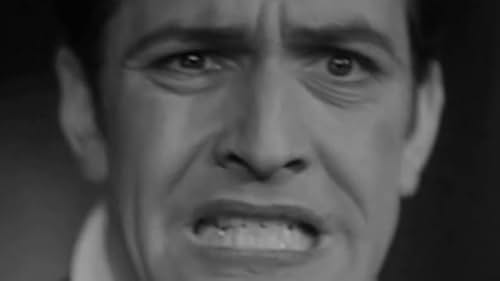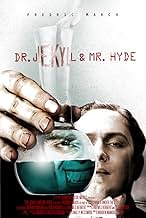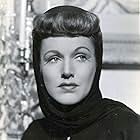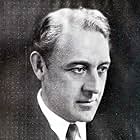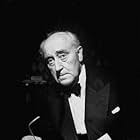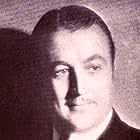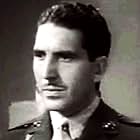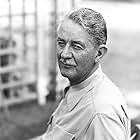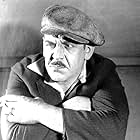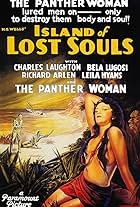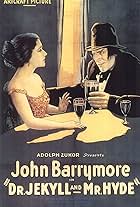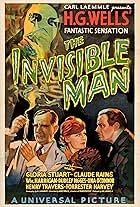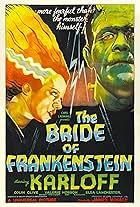Dr. Jekyll faces horrible consequences when he lets his dark side run wild with a potion that transforms him into the animalistic Mr. Hyde.Dr. Jekyll faces horrible consequences when he lets his dark side run wild with a potion that transforms him into the animalistic Mr. Hyde.Dr. Jekyll faces horrible consequences when he lets his dark side run wild with a potion that transforms him into the animalistic Mr. Hyde.
- Won 1 Oscar
- 4 wins & 2 nominations total
Robert Adair
- Ivy's Admirer at Music Hall
- (uncredited)
Harry Adams
- Pub Patron
- (uncredited)
William Begg
- Party Guest
- (uncredited)
Leonard Carey
- Briggs - Lanyon's Butler
- (uncredited)
Rita Carlyle
- Jekyll's Patient
- (uncredited)
Frank Goddard
- Undetermined Role
- (uncredited)
Bobbie Hale
- Pub Patron
- (uncredited)
Pat Harmon
- Music Hall Customer
- (uncredited)
Sam Harris
- Party Guest
- (uncredited)
Boyd Irwin
- Police Inspector
- (uncredited)
Tom London
- Undetermined Role
- (uncredited)
- Director
- Writers
- All cast & crew
- Production, box office & more at IMDbPro
Storyline
Did you know
- TriviaThe remarkable Jekyll-to-Hyde transition scenes in this film were accomplished by manipulating a series of variously colored filters in front of the camera lens. Fredric March's Hyde makeup was in various colors, and the way his appearance registered on the film depended on which color filter was being shot through. Only in the late 1960's did Mamoulian reveal how this was done.
- GoofsImmediately after Hyde changes to Jekyll in front of Dr. Lanyon, he moves his head and briefly reveals the padded armature attached to the back of his chair, intended to hold his head in the same position while the makeup artists worked on various stages of his transformation.
- Alternate versionsThis film was published in Italy in an DVD anthology entitled "Il dottor Jekyll e Mr. Hyde", distributed by DNA Srl. The film has been re-edited with the contribution of the film history scholar Riccardo Cusin . This version is also available in streaming on some platforms.
- ConnectionsEdited into Mondo Lugosi - A Vampire's Scrapbook (1987)
- SoundtracksToccata and Fugue in D Minor, BWV 565
(1708) (uncredited)
Music by Johann Sebastian Bach
Played by orchestra during opening credits and in some scenes by an anonymous organist dubbing Fredric March
Featured review
As this film demonstrates, director Rouben Mamoulian (Applause (1929)) and cinematographer Karl Struss (Sunrise (1927)) were two of the great innovators in renewing the role of the camera for the talkies. Lesser talents began the talkies much the same as silent films began: with a static camera. The sound is still creaky, as usual, with awkward silences, but it's not bothersome. The editing isn't always seamless here, either, and, at times, makes the film seem unpolished, but that, too, is minor. This is the best version of Robert Louis Stevenson's novella "The Strange Case of Dr. Jekyll and Mr. Hyde", in my opinion, and that has very little to do with the actual story adaptation, which comes more from the stage, anyhow. It's the role of the camera that's remarkable.
I don't mean to say that this adaptation is of little interest; it's especially interesting when compared to the novella and its other adaptations. The 1920-John Barrymore version features a more grotesque Hyde and a stiffer Jekyll. Here, Jekyll is, at first, full of gaiety and youthful exuberance. That's more faithful to the novel, but also reflects the filmmakers' intentions and the changes in Hollywood. The 1920 film was bolder in content in some respects; it was a mood piece of horror and atmosphere. The fogy lamp-lit slums of London are still realized vividly in this one, but much of the feeling in them is lost. On the other hand, the mirror motif comes out more here, which corresponds nicely with the doppelgänger (or doubles) theme inherent in the story. This 1931 film is of the classic Hollywood era. The added emphasis on the romance between Jekyll and Muriel is a result. This version is about more than the story, though; the major focus is in the camera-work.
The film begins with about three and half minutes of long point-of-view takes, with a mobile camera, from the perspective of Dr. Jekyll. It establishes the camera as an active participant in the film, rather than merely a static recorder. Throughout the picture, the camera continually moves--from slight zooms, dollies, pans and tilts to dance-like tracking shots during the party sequence. Additionally, some extreme close-ups show only a character's eyes. A POV shot during Jekyll's first transition into Hyde turns into spinning memories, which is in addition to the special effects that allow for transformations that are seen with fluent, unbroken rhythm from the camera's eye.
The camera positioning is varied, as well, and some shots are extraordinary just in their positions. The photography exploits the sets to greater effect occasionally, and the filmmakers position props with the camera especially well and in rather thematic ways that apply to the story. Yet, the photography is most brilliant when not subject to much scene dissection: long takes that are unbroken and add more fluency to the already tight plot.
One could say this is showy film-making; even the transitional effects seem to draw attention to themselves: lengthy dissolves that linger as superimposed images (such as the image of Ivy's legs over the image of Jekyll and Dr. Lanyon's debate) and wipes that create brief split-screen shots. But, the camera is the most essential part of film-making (along with editing), and it seems negligent to subject it to a role of impotence--to just recording an enacted play. This 1931 "Dr. Jekyll and Mr. Hyde" is a cinematic artwork and shows what film should be concerning the role of its most basic apparatus.
I don't mean to say that this adaptation is of little interest; it's especially interesting when compared to the novella and its other adaptations. The 1920-John Barrymore version features a more grotesque Hyde and a stiffer Jekyll. Here, Jekyll is, at first, full of gaiety and youthful exuberance. That's more faithful to the novel, but also reflects the filmmakers' intentions and the changes in Hollywood. The 1920 film was bolder in content in some respects; it was a mood piece of horror and atmosphere. The fogy lamp-lit slums of London are still realized vividly in this one, but much of the feeling in them is lost. On the other hand, the mirror motif comes out more here, which corresponds nicely with the doppelgänger (or doubles) theme inherent in the story. This 1931 film is of the classic Hollywood era. The added emphasis on the romance between Jekyll and Muriel is a result. This version is about more than the story, though; the major focus is in the camera-work.
The film begins with about three and half minutes of long point-of-view takes, with a mobile camera, from the perspective of Dr. Jekyll. It establishes the camera as an active participant in the film, rather than merely a static recorder. Throughout the picture, the camera continually moves--from slight zooms, dollies, pans and tilts to dance-like tracking shots during the party sequence. Additionally, some extreme close-ups show only a character's eyes. A POV shot during Jekyll's first transition into Hyde turns into spinning memories, which is in addition to the special effects that allow for transformations that are seen with fluent, unbroken rhythm from the camera's eye.
The camera positioning is varied, as well, and some shots are extraordinary just in their positions. The photography exploits the sets to greater effect occasionally, and the filmmakers position props with the camera especially well and in rather thematic ways that apply to the story. Yet, the photography is most brilliant when not subject to much scene dissection: long takes that are unbroken and add more fluency to the already tight plot.
One could say this is showy film-making; even the transitional effects seem to draw attention to themselves: lengthy dissolves that linger as superimposed images (such as the image of Ivy's legs over the image of Jekyll and Dr. Lanyon's debate) and wipes that create brief split-screen shots. But, the camera is the most essential part of film-making (along with editing), and it seems negligent to subject it to a role of impotence--to just recording an enacted play. This 1931 "Dr. Jekyll and Mr. Hyde" is a cinematic artwork and shows what film should be concerning the role of its most basic apparatus.
- Cineanalyst
- Sep 3, 2005
- Permalink
Details
Box office
- Budget
- $535,000 (estimated)
- Gross worldwide
- $16,615
- Runtime1 hour 38 minutes
- Color
- Aspect ratio
- 1.20 : 1
Contribute to this page
Suggest an edit or add missing content


